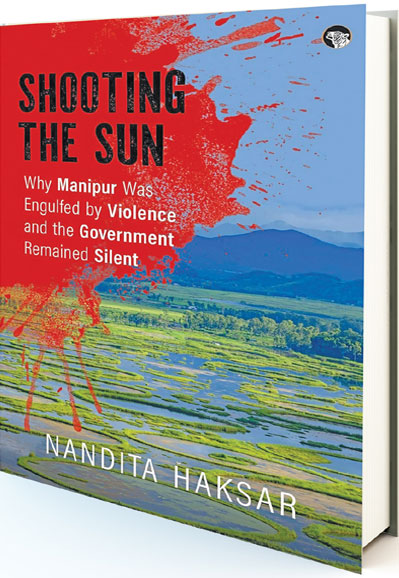It Didn’t Start in May
Shooting the Sun is an insightful, candid and forthright description of the situation prevailing in Manipur
S.K. Sood

Nandita Haksar in her eminently readable book Shooting The Sun, about the ongoing strife in Manipur hits the nail on its head when she concludes that the conflict between Meitei and Kuki people is an identity issue and arises because “the former [Meitei] enjoys greater agency in decision-making and discourse-setting processes over the latter”.
Written in simple language, the author, besides addressing the question of the nature of conflict—whether it is ethnic or communal—addresses several other important issues impacting the situation in Manipur. These include the role of Meitei and Kuki extremist organisations in the violence. Besides asking the important question as to why police and paramilitary forces deployed in large numbers in the state are unable to bring the violence under control, the author also speculates about the reasons for silence and apparent inaction on the part of the central government to bring the situation under control. The question of the involvement of corporate interests, leading to the cycle of violence and most importantly, how and when peace and normalcy are likely to be restored in the state given the level of animosity and anger between the two ethnic groups, have also been explored.
The violence now going on for over 11 months is shocking in its viciousness, resulting in over 200 deaths and internally displacing almost 75,000 persons. The book brings out the pain suffered by the people at the receiving end of the unadulterated savagery with empathy and understanding that the author has developed as an insider being married to a Naga from that area. In her own words, “The hate and rage are tangible and there is no way to make the stories any less brutal.”
The violence that started on 3 May 2023 was a direct outcome of insufficient understanding of the order of the Manipur High Court directing the government to consider the Meitei demand to be recognised as scheduled tribes. The government also did not care to explain the implications of the order to tribal people
Subscribe To Force
Fuel Fearless Journalism with Your Yearly Subscription
SUBSCRIBE NOW
We don’t tell you how to do your job…
But we put the environment in which you do your job in perspective, so that when you step out you do so with the complete picture.







